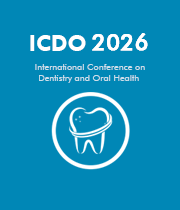Periodontal endoscopy and treatment
Periodontal endoscopy is a new, minimally invasive procedure used in dental care to diagnose and treat periodontal disease. It involves the insertion of a small endoscope into the gingival sulcus of the teeth to allow for examination and treatment of the periodontal pockets. This procedure offers an alternative to traditional open flap periodontal surgery, as it requires less tissue trauma and fewer sutures. The primary benefit of periodontal endoscopy is that it enables dentists to gain access to the periodontal pockets with greater accuracy, allowing for more targeted and effective treatment. The endoscope's small size and increased maneuverability also allow dentists to reach areas of the mouth that are difficult to access with traditional surgery. Additionally, because the procedure is minimally invasive, there is less tissue trauma, meaning less pain and faster healing times for patients. The procedure begins with a thorough examination of the patient's gums and teeth to identify any signs of periodontal disease. If periodontal disease is detected, the dentist will then employ the endoscope to visualize the condition of the periodontal pockets. The endoscope's small size allows dentists to reach and identify deeper pockets, as well as to assess the degree of bone loss. Once the condition of the periodontal pockets has been assessed, the dentist can then use the endoscope to perform the necessary treatment. Depending on the extent of the disease, this may include scaling, root planing, or other forms of treatment. The endoscope can also be used to administer medications directly to the periodontal pockets, which can help reduce inflammation and bacterial growth. In conclusion, periodontal endoscopy is a minimally invasive procedure that offers a safer and more accurate way to diagnose and treat periodontal disease. It enables dentists to treat deeper pockets and administer medications directly to the affected areas, leading to faster healing times and improved patient outcomes.




Title : A systematic review on the early detection of oral cancer using artificial intelligence and electronic tongue technology
Maryam, Kardan Dental Clinic, Iran (Islamic Republic of)
Title : Cutaneous, Cranial, skeletal and dental defects in patients with Goltz syndrome
Ali Al Kaissi, National Ilizarov Medical Research Center for Traumatology and Orthopaedics, Russian Federation
Title : Artificial intelligence in clinical decision making in third molar surgery
Tannaz Pourlak, Tabriz University of Medical Sciences, Iran (Islamic Republic of)
Title : The role of vitamins and nutritional supplements in temporomandibular joint disorders (TMDs) among Yemeni population
Muharrm Abdo Bazza Othman, Yemen Dental Association, Yemen
Title : The nature and management of dental erosion in patients with bulimia nervosa
Maya Fahy, The Royal Victoria, School of Dentistry, United Kingdom
Title : Evaluating hygienist follow up for head and neck oncology patients in secondary care: Results from a two cycle audit
Peter Basta, Newcastle Dental Hospital, United Kingdom